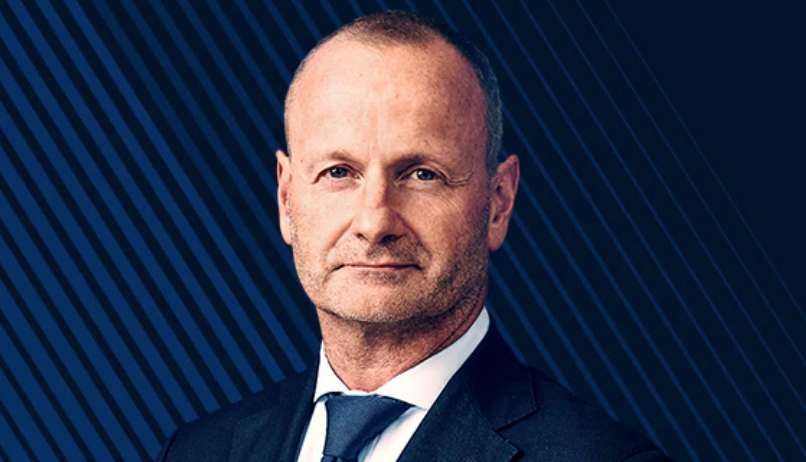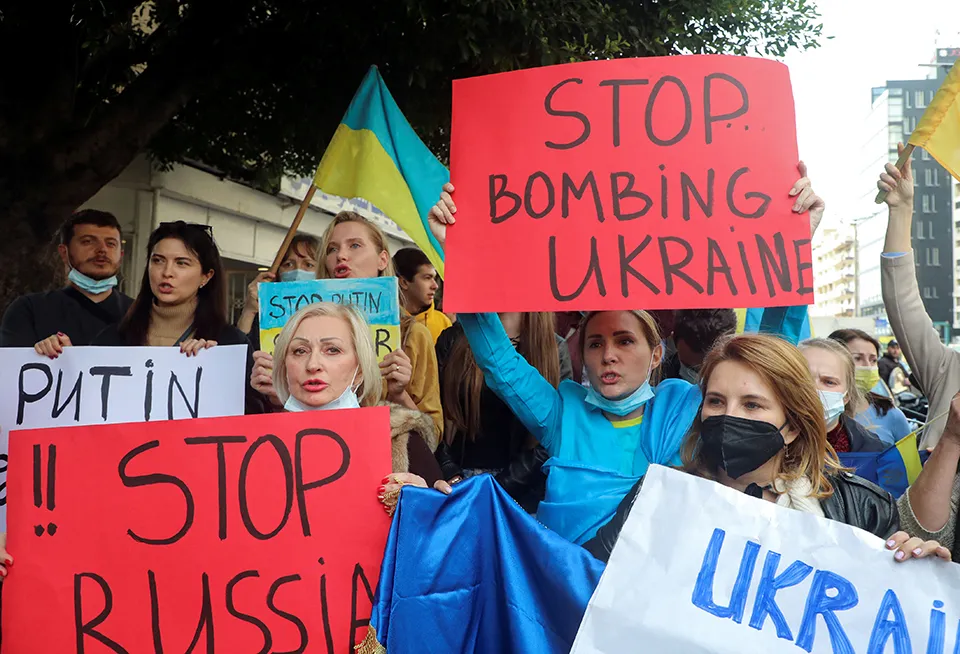In the film of the Big Short, two youngsters in a garage run a hedge fund that they explain bets on bad things happening that most people don’t want to think about and so under-price the risk of.
It is a fictionalized account of Cornwall Capital, a family office that author Michael Lewis identified as one of the very few investors to see the all-consuming rot in sub-prime and bet against the US mortgage market in the run-up to the great financial crisis.
Heightened volatility … shows markets had not fully priced in the likelihood of deeper conflict
Mark Haefele, UBS Wealth

On Thursday, Russian troops invaded Ukraine and markets seemed to be surprised.
Mark Haefele, chief investment officer at UBS Wealth Management, notes: “Heightened volatility on the escalation of the conflict shows markets had not fully priced in the likelihood of deeper conflict.”
Investors, encouraged by most sell-side analysts, had been clinging to the hope of a diplomatic solution on the grounds that a military assault might not be in the best economic and financial interests of Russia’s president, Vladimir Putin, personally or the Russian people.
Just two days earlier, after Russian ‘peacekeepers’ had already moved into breakaway parts of eastern Ukraine, Haefele was still telling clients that “the severe risk case we described earlier – including fighting and a prolonged interruption of Russian energy exports – still represents a tail risk at this stage.”
The tail risk has just started to lash the markets.
Seismic
As the explosions started, the Stoxx Europe 600 index was down 3%; S&P futures were down 2% before the US market open, with Nasdaq futures down 2.6%. The Russian rouble fell by just under 5%. Oil shot the other way, with Brent Crude up 8% before mid morning on the day of the invasion, rising to over $101 a barrel for the first time since 2014.
Jim Reid, analyst at Deutsche Bank, called these moves “seismic”. But are they, or is this just the start?
Western powers will have to hurt themselves if they are to hurt Russia
Steen Jakobsen, Saxo Bank

Steen Jakobsen, chief investment officer at Saxo Bank, points out that “in modern history, new shock negative ‘impulses’ deliver about a 5% downside risk in equities on average. Meaning we have done a lot of the damage relative to this baseline already this morning”.
However, there is a big qualifier.
Concern at an overly aggressive central bank response to the highest inflation levels in the US and Europe in decades had already bought US and European stock markets down 10% from their January highs before the invasion.
Does this correction soon become a bear market?
Those inflation fears meant that government bonds did not rally strongly as the rockets struck. There is no obvious safe-haven trade, other than perhaps commodities.
Now the question becomes how far Europe will go with sanctions against Russia given its dependency on imported energy and rising prices already hitting populations hard.
The US will lead, but it is insulated against these risks by an abundance of domestic supply.
Hurt locker
Jakobsen points out that while Western governments have previously tried to box in Russia with sanctions in various ways, they have never targeted the actual flow or price of commodities, particularly oil and gas.
“That will now change,” he says, “and the Western powers will have to hurt themselves if they are to hurt Russia, as new sanctions are likely to affect the flow of commodities itself and possibly Russia’s financial system and its access to the world”.
Rising oil prices will boost inflation even further, making the difficult choices for central banks in March even tougher. A high oil price, while it transfers value from oil consumers to oil producers, is also a tax on non-oil parts of the global economy. It pushes up inflation while also being a form of monetary tightening.
Be wary of sell-side analysts offering historic models on market reaction. This is a unique moment.
One thing is for certain: any issuer that had been planning an equity or bond issue for Thursday February 24, 2022, had better think again. Capital markets are closed.



